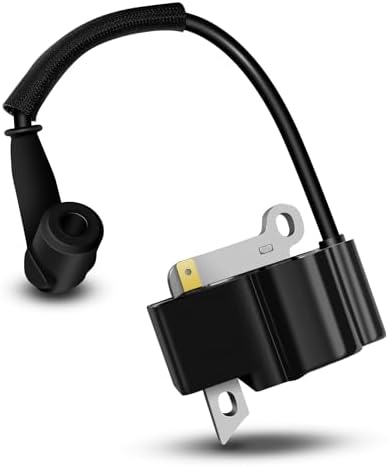Stihl backpack sprayers are renowned for their reliability and power, making them a favorite among professionals in landscaping, agriculture, and pest control. But owning one is only half the battle; knowing how to use it effectively is crucial for achieving optimal results and maximizing its lifespan. This comprehensive guide will walk you through everything you need to know, from understanding the engine’s torque to mastering practical spraying techniques.
Understanding Stihl Backpack Sprayer Engine Options and Torque

Stihl offers a range of backpack sprayers, each with different engine options, influencing their power and efficiency. The engine’s torque is a critical factor. Torque, measured in Newton-meters (Nm), represents the rotational force the engine produces. Higher torque translates to a more powerful and consistent spray, especially when dealing with thicker solutions or tackling challenging terrain. You’ll find that Stihl’s higher-end models boast significantly greater torque than their entry-level counterparts. This translates to smoother operation, less strain on the engine, and better overall performance under pressure.
For example, a Stihl model with a higher cc engine will generally exhibit superior torque, enabling it to maintain a consistent spray pattern even when pumping viscous liquids or working uphill. This is vital for professional applications requiring precise control and consistent coverage. Look closely at the specifications sheet provided by Stihl for each model to get a clear picture of torque output.
Engine Options: A Detailed Look

Stihl employs a variety of robust, reliable engine types in their backpack sprayers. While specifics change with models and updates, you’ll typically see variations in engine displacement (cc) and fuel type (gasoline). Higher cc engines usually translate to increased power and torque, which can be beneficial for larger properties or more demanding spraying tasks. However, this also usually means a heavier unit.
Consider the specific needs of your applications when selecting an engine. If you primarily spray smaller areas with thinner solutions, a smaller engine might suffice. For extensive professional use and thicker chemicals, invest in a higher-powered model with increased torque.
Towing Capacity and Practical Considerations

While not explicitly designed for towing, understanding the weight capacity of your Stihl backpack sprayer is crucial. The sprayer itself, plus the weight of the solution, can add significant strain to your back. It’s vital to stay within safe weight limits to avoid injury and ensure optimal performance. Always refer to the manufacturer’s specifications for the maximum weight recommendation.
Consider investing in a good quality harness to distribute the weight more evenly across your shoulders and back. Regular breaks and hydration are crucial, particularly during extended use. Remember, ergonomics are key to preventing long-term physical strain.
Stihl vs. Competitors: A Comparative Analysis
Stihl isn’t the only player in the backpack sprayer market. Competitors like Solo, Field King, and ECHO offer comparable models. When comparing options, consider factors beyond just the price point. Compare engine power (horsepower and torque), tank capacity, nozzle types and adjustability, weight, and the quality of the build. Read reviews from other users to get a real-world perspective on performance and durability.
Stihl frequently stands out for its build quality and overall durability, often making it a worthwhile investment in the long run, despite potentially higher upfront costs. However, other brands offer excellent value with features suitable for specific tasks. Thorough research is key to making an informed decision that best suits your needs and budget.
Practical Tips for Using Your Stihl Backpack Sprayer Like a Pro

Mastering your Stihl backpack sprayer goes beyond simply filling the tank and pressing the trigger. Here are some pro tips to enhance your efficiency and results:
- Proper Mixture Preparation: Always follow the manufacturer’s instructions for mixing your spraying solution. Incorrect ratios can damage the sprayer or lead to ineffective treatment.
- Nozzle Selection: Choose the correct nozzle based on the material being sprayed and the desired coverage. Experiment to find the optimum nozzle for your specific task.
- Maintenance is Key: Regular cleaning and maintenance are essential for extending the lifespan of your sprayer. Clean the tank and nozzle thoroughly after each use. Consult your owner’s manual for specific maintenance instructions.
- Consistent Spray Technique: Maintain a steady pace and a consistent distance from the target area for even coverage. Overlap spray patterns slightly to avoid missed areas.
- Safety First: Always wear appropriate personal protective equipment (PPE), including gloves, goggles, and a respirator, when using chemicals. Follow safety guidelines for handling and storing chemicals.
- Understand Your Terrain: Adjust your spraying technique based on the terrain. Steeper slopes may require slower speeds and more careful control.
- Practice Makes Perfect: Spend time practicing with your sprayer in a controlled environment before tackling large-scale projects. This will help you become comfortable with the controls and develop a smooth, efficient spraying technique.
With its powerful engines and robust construction, a Stihl backpack sprayer is a valuable tool for professionals. By understanding its features, performing proper maintenance, and applying effective spraying techniques, you can achieve exceptional results and extend the life of your equipment. Remember to always prioritize safety and consult your owner’s manual for specific instructions and warnings. Happy spraying!


